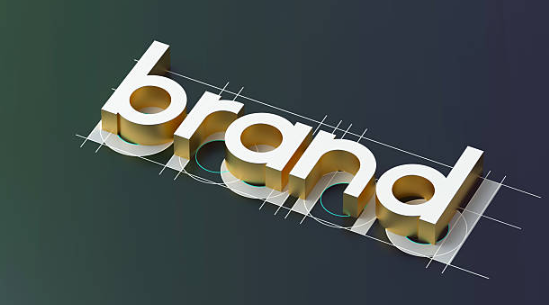In the virtual world, a logo is the foundation of a firm’s branding and first interaction with a possible customer; it is far more than simply a drawing. It must be able to simultaneously Digital Marketing convey the values, ethics, and corporate sector of an entity, as well as be adaptable enough to present on a grand scale. From the little favicon on a browser window to a social media profile image, a range of internet locations. In a busy online market, a terrific logo grabs instantaneous reputation, builds self assurance, and separates a business from the opposition. For companies looking to own this valuable asset, partnering with a professional Logo Design Birmingham Uk company has the strategic know-how to produce a mark that is both beautiful and commercially practical on the online platform.
Typography Showing Brand Personality
Choosing a font is among the most significant choices for the personality of a brand. A unique or well-known font can distinguish a company and add sophistication. A clear, modern sans serif font might denote innovation and cleanliness; on the other hand, a traditional serif typeface conjures dependability and habit. The font should be legible at really tiny sizes on cellphones; additionally, it enhances the iconographic component of the logo. Good typography guarantees the mark itself is balanced and professional, and the brand name is easily readable.
Simple for Immediate Recognition and Flexibility
The most effective logos tend to be simple. A simple, minimalist layout guarantees instant popularity and easy processing and don’t forget via the human thoughts. In virtual advertising, simplicity is the important thing to versatility. The logo must adapt effortlessly to in shape a large number of makes use of with out compromise, from a big internet site header to a small cellular app icon. A complex layout with excessive detail will dilute at smaller sizes and become unfocused and indistinguishable without creating any impact on key digital touchpoints. Fundamental logos are also more adaptive on various color backgrounds and digital marketing, offering seamless branding wherever they appear.
Reminiscibility for Consistent Brand Recall
The primary purpose of a logo is to create a memorable visual identity for the brand it represents. One creative concept achieving memorability leaves a lasting impression on the memory of viewer. It could be through a secret but not too obvious meaning, a smart use of space, or an unexpected form that doesn’t fit in the competition. Given the instant scrolling of social media feeds and internet advertisements, a company has only a brief to be seen. A unique logo suggests that the brand will be recalled by a customer once it is quickly scanned, therefore raising the likelihood of interaction and conversions considerably.
Versatility in Every Form of Digital Content
A modern logo should work ideally across an ever-expanding digital marketing world. This calls for design flexibility. The logo should also be in responsive forms, perhaps a stacked form for social profile photos and a horizontal form for usage in website headers. It has to be understandable in full colour, black and white, and one colour foil stamp. On websites and apps, it must be vivid in both dark and light modes. From mobile sites and email signatures to Facebook adverts and Instagram stories, this degree of adaptability guarantees the brand has a professional and uniform image on every platform.
Strategic Color Psychology
One of the most effective communication techniques that stirs particular emotions and associations is color psychology. Using color psychology strategically helps a good logo to spread the brand message. Blue will probably project trust and security (perfect for tech or financials), green for growth and health, and yellow for optimism and hope. To be vivid there without breaking the budget on printing methods, the color scheme must be selected for reproduction on screens. Through all digital media channels, a well-designed colour palette promotes memorability and might affect a consumer’s perception and interaction with the brand.
Originality to Deliver a Clear Identity
Originality is no longer a choice in the competitive digital marketplace today. A logo must be ownable and distinct so it doesn’t get mixed with the competition and is available for trademark protection. It should be an original mark with a clear association to one specific brand. That involves thorough market research so the design does not, unbeknownst to you, copy the logo of someone else. A new logo, designed from a custom creative process rather than templated solutions, keeps the unique personality of the business intact and lays the groundwork to establish a solid, defensible, and recognisable brand online presence.
Conclusion
A great logo designed for digital marketing is an intelligent asset, purposefully designed to be simple, memorable, and incredibly pertinent. It balances refined design principles with the technical demands of modern digital channels to provide flexibility and consistency across touchpoints. From the application of colour psychology, considered typography, and unapologetic originality, it evolves from merely being an image to being the visual articulation of the promise of the brand. With the emergence of digital technology, where first impressions are made in milliseconds, investing money in a professionally designed logo is not an expenditure but a crucial investment in building recognition, trust, and long-term business success.





